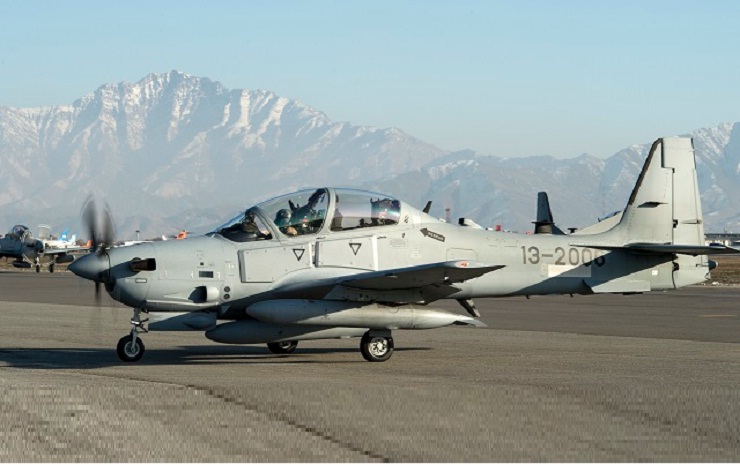AT-KABUL: Afghan Air Force (AAF) on Tuesday received four more A-29 Super Tucano attack aircrafts from the United States that would boost Afghan security forces ability in the fight against militants, Ministry of Defense said.
The four new fighter aircrafts are part of the 20 A-29s plans that would be given to Afghan Air Force by the United States till 2018 aimed at strengthening the fledgling air force. Four plans were already delivered to Afghan army earlier this year and now with this batch, the AAF has a total of eight A-29 fixed-wing Super Tucanos. AAF is part of the Afghan National Army and yet to be made a separate force having an air chief to plan independent air operations.
“Afghanistan’s Air Force is getting strengthened day by day and receiving more fighting equipments which will more boost and support the Afghan ground troops in fight against militants,” Ministry of Defense said in a statement, issued here in Kabul.
Afghanistan’s mountainous geography most of the time limit access of ground troops to battle fields to support its forces in remote areas and air force’s role is key in such conditions to defeat the militants in remote valleys, where militants can block the roads only with a single explosion to prevent reinforcement of the Afghan troops.
“Utilization of these aircrafts will further boost the series of deadly airstrikes against terrorists’ hideouts in the country,” the ministry said in its short statement.
The low, slow-flying attack airplanes of Brazilian origin is already employed by 10 air forces around the globe, and the Lebanese air force is next in line to be equipped with American-made examples produced in Jacksonville, Florida.
The A-29s were gifted to Afghanistan’s fledgling air armada as a replacement for the soon-to-retire Russian Mi-35 helicopter gunship, which has been kept alive via heavy cannibalization of parts.
Pilot training has been taking place at the Moody AFB’s 81st Fighter Squadron in Georgia since early 2015, and the initial cadre graduated in December. The first four aircraft landed in Afghanistan on January 15.
Once established, the small fleet will become an important air-to-ground attack and aerial reconnaissance capability, and the turboprops can also perform air interdiction using air-to-air missiles.
The A-29 will be formally inducted into the Afghan inventory this spring. All 20 aircraft and 30 pilots are expected to be in place in Afghanistan by 2018.
 Afghanistan Times
Afghanistan Times




